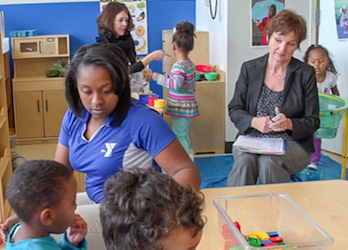
When I first certified as a CLASS Affiliate Trainer, I had little experience using the tool. Like many, I had completed the Observation Training, studied for my reliability test, and breathed a huge sigh of relief when I became reliable. When my boss asked me to attend the Train-the-Trainer Program, I readily agreed. After all, I knew the CLASS tool and had experience training on a variety of topics related to early childhood. Of course I could be a CLASS trainer! With my first training scheduled, I spent many hours studying the materials, practicing the PowerPoint, and watching the videos. I thought I was good to go.
However, during the training, it was clear that something was missing. I fumbled through explanations of how to use the score sheet and had difficulty determining what to document. I could not confidently answer questions about where to stand during an observation or what to do if there were multiple adults in the classroom. Then it occurred to me: The problem was that I was teaching others how to observe and code classrooms with the CLASS when I had little experience doing myself.
I transformed my “ah-ha” moment into action by making arrangements to practice observing in classrooms in my community. This is where my CLASS knowledge really grew. Conducting live observations helped me become one with the manual and develop a deeper understanding of each dimension and how it may look in different types of activities and classrooms. During the Observation Training, we show the same videos over and over and it’s important that trainers be very familiar with these videos, but nothing builds CLASS knowledge like conducting live observations.
I remember my trainer saying, “The best way to learn the CLASS is to use the CLASS” and, boy, was she right! Conducting a CLASS Observation Training without having conducted live observations is a bit like teaching expectant parents to diaper a baby by practicing on a doll and then expecting them diaper a squirming, crying baby. Much easier in theory than in practice!

